Bass of the Week: 5th Day Products Mallory Bass

This week we’re checking out a bass by 5th Day Products called Mallory, which takes its name from Juliette Lewis’ character in Natural Born Killers. Luthier Jeremy McDiarmid explains that everything about the bass is oversized, starting with its 39″ – 35″ multiscale neck that is a seven-piece laminate of bubinga, maple, and purpleheart. It also has some interesting features based on its namesake.
“The body wings are attached at offsetting 22.5-degree angles making the fretboard and playing area tilt up towards the player with the body held normally,” McDiarmid writes. “For support and adjustment, it features a 25″ two-way truss rod which is accessed by the tip of the headstock rather than under the nut. The 24 fret compound fretboard radius of 10″ to 22″ is marked with shell casings from a .22 caliber and the bridge extensions are Remington ultra mag 300 casings.”
Mallory also has a full-featured set of electronics with dual independent channels and controls going to two separate outputs. Channel/output A has a Warman Guitars Jazzbar pickup in a Musicman Stingray position with a concentric volume and tone pot recessed into the pickguard. A latching push-button coil tap lets you toggle between humbucker and single-coil operation.
Output B is the “Split, Split Coil” effects output channel. “It has Fender P-Bass pickups (completely stripped and having their bobbins ground down as close to the windings as possible for size) wired like a Les Paul with neck or bridge selection and separate volume controls,” the builder explains. “Neck single coil is positioned under D & G strings, bridge single coil is positioned under E & A. No tone pot on this circuit providing a very bright raw signal to output B which is intended for effects pedals or with A/B/Y pedal combination.”
That’s a whole lot of firepower for one bass.
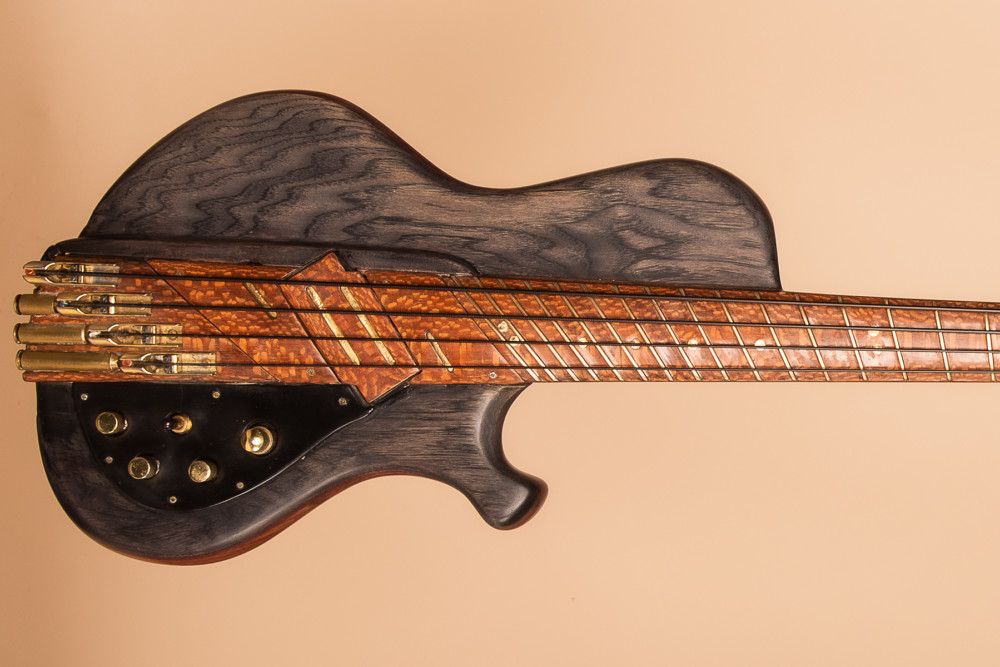
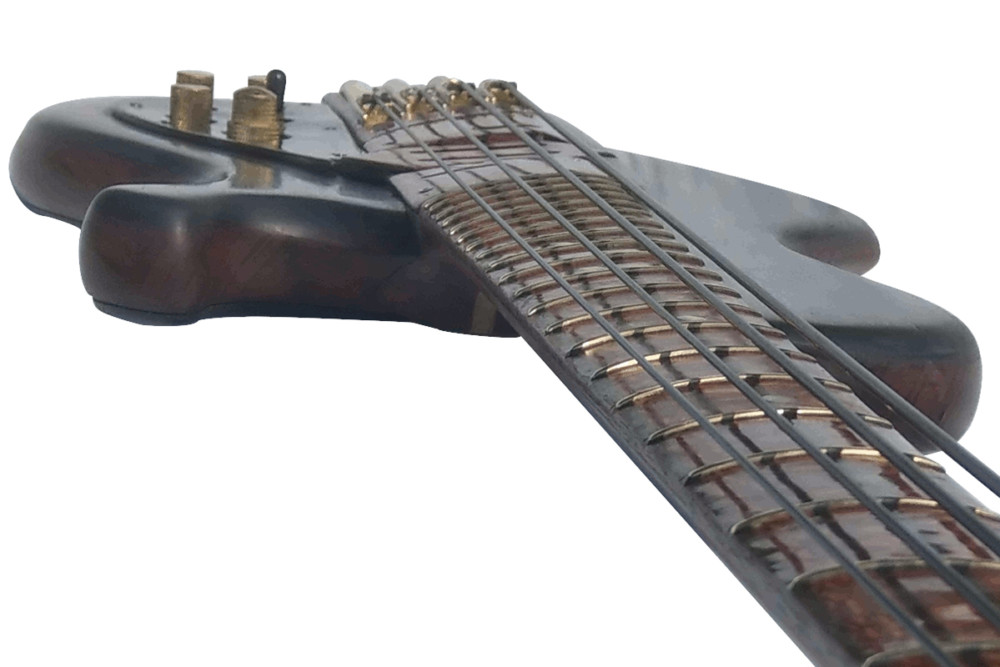
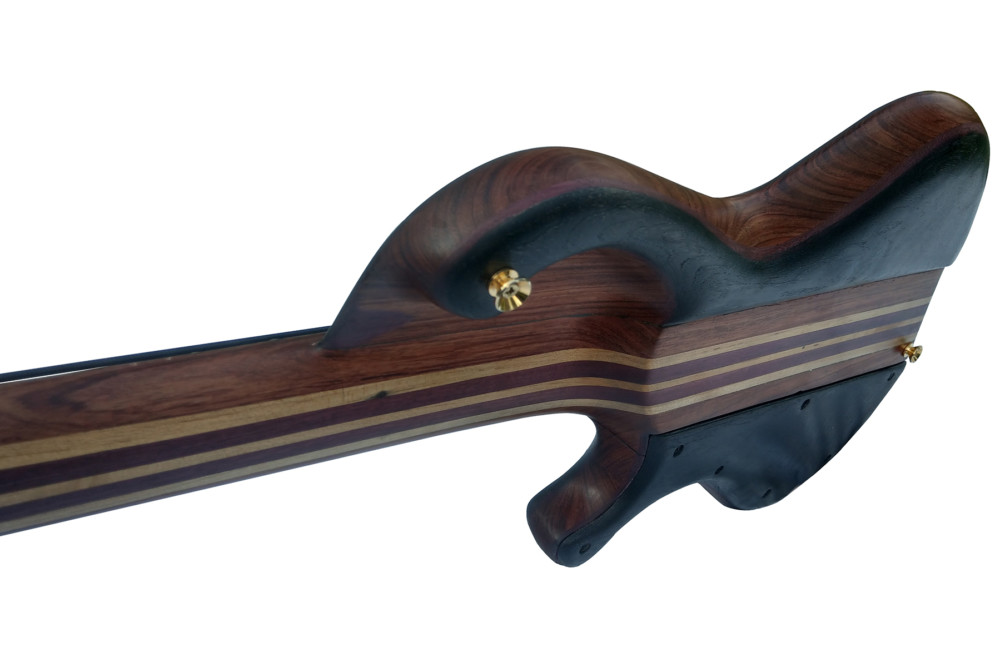
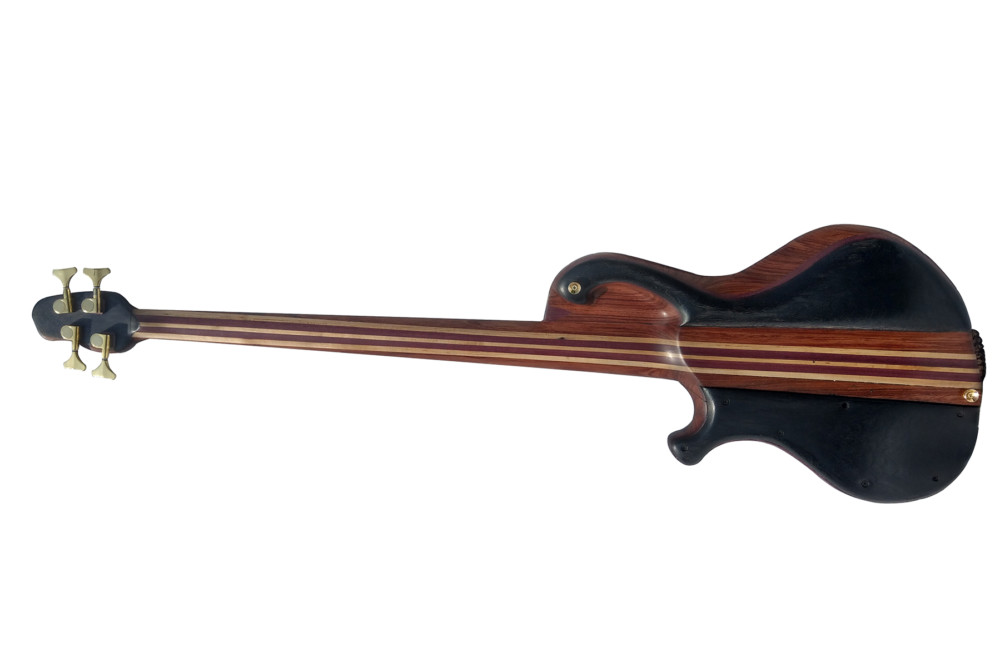
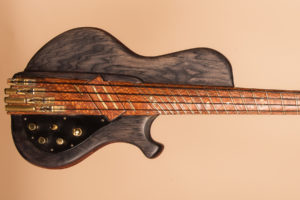
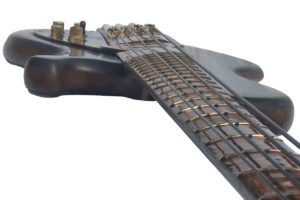
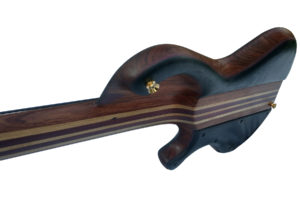
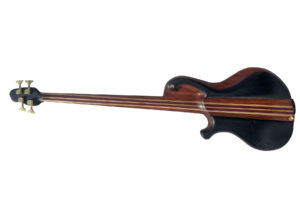
5th Day Products Mallory Bass Specs:
| Construction: | Neck-Through |
| Scale: | 39″ - 35″ multiscale |
| Body Wings: | Hickory |
| Top: | Purpleheart |
| Neck: | 7-piece Bubinga, Maple, Purpleheart |
| Fretboard: | One-piece Leopardwood |
| Fretboard Radius: | 10″ to 22″ Compound |
| Frets: | 24 |
| Pickups: | Warman Guitars Jazzbar, Fender Split Coils |
| Electronics: | Dual Channels/Outputs |

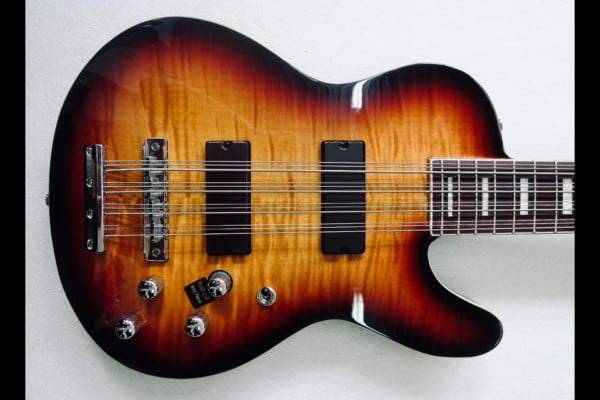
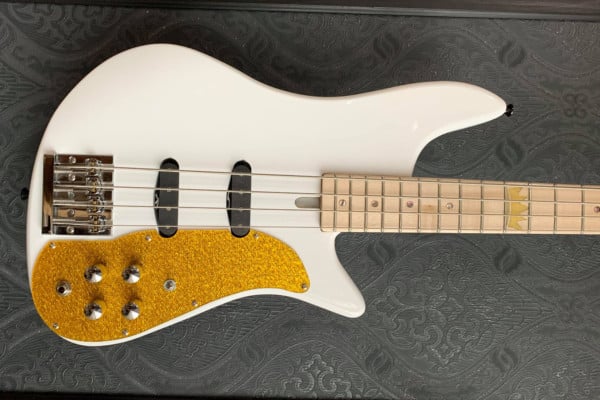

Wow, just the sheer size of this instrument makes it unplayable to me. I put Jazz necks on P basses because my hands are that small and I prefer Fender 30 inch scale instruments on top that. There is no way I could even begin to navigate this behemoth. It’s a shame too, as it’s obvious this is a very finely crafted instrument. I am still looking for a luthier who would be willing to build a multi-scale with 34 or 33 inch on top, maybe 34.5 for a 5 string with a low B and go down from there. Again, I am looking for as narrow a neck width as possible and maybe even a symmetrical neck profile on top of that for these poor, small and constantly aging hands.
Hi Ruben! In case you are interested, I’ve built many multiscale basses ranging from 34-32, to 35-33 (4 and 5 strings). Feel free to check my Instagram https://www.instagram.com/tangenteinstruments/ to see our builds.
I thank you very much for your compliment to my craftsmanship as well as your question/observation about the scale size.
A giant (literal) challenge with Mallory was balancing all of the design features while making something that felt and sounded great. All of my instruments are carved by hand which is slowed down by the constant need to “walk around with it” and check the feel. Some things to consider about scale size is where that length is, the playing position intended by the builder (who also sets the weight balance points) the neck profile and the right hand position.
Standing with Mallory or with my earlier 36″ multi-scale Molly, my left shoulder, arm, wrist and hand is in the same position on the first fret. All of the extra length is from the right hand playing position out onto the body. That playing position is just over 15″ and has a continuous thumb-rest and an effective continuous pick-up ramp due to the compound fretboard radius extending all the way to the saddles. Combined with an asymmetrical neck profile and careful selection of the parallel fret, the wrist position will naturally land in a comfortable position that many people who have never played a multiscale find natural feeling and extremely easy to play despite decades of muscle memory on straight fret configurations.
Any luthier doing one of a kind work for you should be able to walk you through all of these small details to help you get the exact combination you are looking for. My shop and my website are currently relocating to Arizona but feel free to send us a message on our Facebook page to discuss these design considerations. We love talking bass.
PS. There is just something fun about Bronco Basses and other shorter scale basses that make me pick them up whenever I see them. On the engineering side of tone, string tension and string diameter there is a unique experience there that is hard to match once you increase scale just a little further.